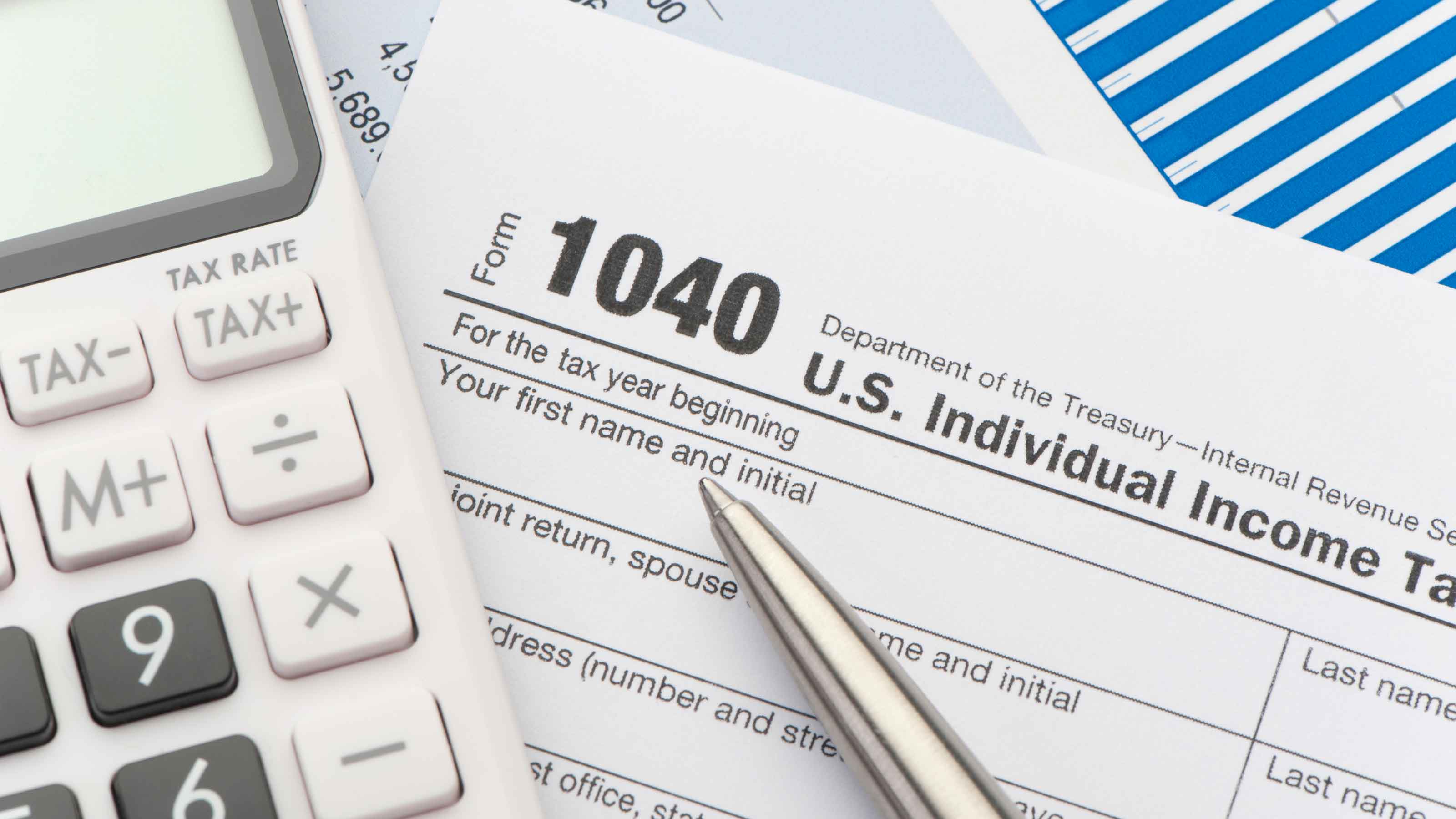Smart Year End Tax Moves
Cutting your tax bill by selling your losers could sweeten an otherwise sour year for investments.

The past year's market rout has probably left you with some real dogs in your investment portfolio. But every dog has its day. By unloading some of your losers by year-end, you can still savor the satisfaction of trimming your 2008 tax bill next spring. "Years like this offer the greatest opportunity to offset current or future capital gains or other income," says Josh Willard, senior vice-president of the Coghlan Financial Group, in San Diego.
| Row 0 - Cell 0 | Sign Up for Daily Year-End Tax Tips |
| Row 1 - Cell 0 | Try Our Easy Tax Withholding Calculator |
| Row 2 - Cell 0 | Quiz: Is It Deductible? |
You must first use your capital losses to offset any capital gains. After that, you can apply your losses to offset up to $3,000 of ordinary income in 2008. This strategy is particularly valuable because wages and interest income are taxed as high as 35%, compared with a maximum 15% rate on long-term capital gains (profits from the sale of investments that you owned for more than a year) and qualified dividends. Investment losses that you can't use to offset capital gains or income may be carried over for future tax years, which could come in handy when the market rebounds. Caveat: This strategy applies only to your taxable accounts, not to retirement accounts.
Zero Capital Gains
Some investors will be able to capture tax-free profits without harvesting losses, thanks to a new provision that allows people in the two lowest income-tax brackets to pay nothing on long-term capital gains in 2008. The 0% capital-gains rate applies to married couples with taxable incomes of $65,100 or less; single heads of households with taxable incomes of $43,650 or less; and individuals with taxable incomes of $32,550 or less.

Sign up for Kiplinger’s Free E-Newsletters
Profit and prosper with the best of expert advice on investing, taxes, retirement, personal finance and more - straight to your e-mail.
Profit and prosper with the best of expert advice - straight to your e-mail.
Your taxable income is the amount left over after you deduct your personal exemptions -- worth $3,500 apiece in 2008 for you, your spouse and each dependent -- as well as your standardized or itemized deductions. "Because this tax break is tied to taxable income, not adjusted gross income, making year-end charitable contributions or otherwise increasing itemized deductions can raise your eligibility for tax-free capital gains," says Bob Scharin, senior tax analyst for Thomson Reuters.
The tax-free capital-gains break is scheduled to continue through 2010. But with a new president and Congress facing a growing federal budget deficit next year, current tax laws could be modified. If you qualify, grab this tax break while you can.
Taxpayers who have some cash-flow flexibility stand to benefit the most. That includes retirees who are not yet required to take annual distributions from their retirement accounts, as well as anyone who can take substantial deductions, such as small-business owners, says Bob Cassel, director of tax services for Baltimore Washington Financial Advisors, in Columbia, Md.
One of Cassel's clients, an early retiree from Addison, Pa., plans to cash in about $40,000 worth of capital gains tax-free this year. Joe Garber relies solely on his IBM pension and investment income. After claiming substantial deductions for mortgage interest and state and local taxes, he and his wife, Jean, should be able to hold their taxable income well below the $65,100 limit. "When Bob told me about it, I was really excited," says Joe, 52. "I'm one happy camper." Any gains that lift the Garbers' income above the $65,100 threshold would be taxed at the regular 15% capital-gains rate.
If your income is too high to qualify, you may still be able to benefit from the tax-free capital-gains treatment by transferring appreciated securities to lower-income family members, such as adult children and elderly parents. As long as you owned the asset for more than one year, the recipient of your gift assumes your holding period and can sell the asset tax-free. But, Cassel warns, don't run afoul of the newly expanded kiddie-tax rules, which now apply to children younger than 19 and full-time college students younger than 24. Investment income that dependent children receive in excess of $1,800 this year will be taxed at your higher rate, not the zero capital-gains rate.
Down-to-the-Wire Deals
Many older taxpayers, such as Mary Mellon of Arlington, Va., were relieved when Congress revived last year's tax break that allowed IRA owners 70 and older to donate up to $100,000 from their retirement account directly to a charity and avoid paying income tax on the distribution. The IRA provision, extended through 2009, was part of the $700-billion economic rescue package. Last year, Mellon, 72, donated her entire required distribution to little-known medical charities that perform pro bono surgeries around the world, and she'll do so again this year. "They do a lot of good work, but they aren't as well known or as well funded as the Red Cross," she says.
IRA owners can't double-dip by claiming a charitable deduction for the donation. But by excluding the donated amount from their income, they may qualify for other tax breaks and reduce the taxable portion of their Social Security benefits.
| Row 0 - Cell 0 | Sign Up for Daily Year-End Tax Tips |
| Row 1 - Cell 0 | Try Our Easy Tax Withholding Calculator |
| Row 2 - Cell 0 | Quiz: Is It Deductible? |
Lawmakers also extended several other expired tax breaks through 2009 as part of the rescue legislation, including one that allows taxpayers who itemize to choose between deducting state sales tax and deducting state income tax on their federal return. Two other tax breaks are so-called above-the-line deductions, which are available even to taxpayers who don't itemize. They include a deduction for up to $4,000 of college tuition and a provision that lets teachers and aides write off up to $250 of out-of-pocket expenses for classroom supplies.
Congress also approved a one-year fix for the alternative minimum tax. The AMT is a parallel tax system that was created nearly 40 years ago to ensure that the very wealthy paid at least some income tax. But because it was never indexed for inflation, it increasingly affects middle-income Americans. The temporary patch will keep about 21 million taxpayers out of the clutches of the AMT, which disallows common deductions, such as state income taxes and local property taxes, as well as personal exemptions for you, your spouse and your children. As a result, you pay taxes on a larger portion of your income.
Get Back When You Give
If you are in a charitable mood this holiday season, consider donating appreciated stock, rather than cash, to your favorite cause. As long as you owned the stock for more than a year, you reap a double tax break: You can deduct the full market value of your donation and escape capital-gains tax on the appreciation. The recipient charity doesn't pay taxes, either. But don't bother donating stock that has lost value. You're better off selling it and using the loss to offset your gains or other income.
If you decide to donate cash, don't forget to get a receipt from the charity or hold on to your bank or credit-card statement to satisfy strict new tax rules that require documentation for any amount you contribute to a charity. And if you're thinking about donating your gas guzzler to a nonprofit organization, be careful to abide by tougher rules for valuing your tax-deductible gift. "Taxpayers have to meet strict IRS requirements in order to claim a deduction of more than $500," says Tom Ochsenschlager, vice-president of taxation for the American Institute of Certified Public Accountants.
Ochsenschlager explains that you can't claim a tax deduction greater than the amount that the charity receives from selling the car (which may be minimal). But if the organization regularly uses the vehicle to perform charitable activities, such as delivering meals, or if it gives or sells it to someone in need for substantially less than fair market value, you can deduct the car's fair market value. Just be sure to get a receipt from the charity substantiating your donation on IRS Form 1098-C.
Breaks for Homeowners
The housing-bailout bill signed into law in July includes tax-law changes for both home buyers and homeowners. First-home buyers who purchase a house after April 8, 2008, and before July 1, 2009, may qualify for a tax credit of up to $7,500. (A credit, which reduces your tax bill dollar for dollar, is more valuable than a deduction, which merely reduces the amount of your income that is subject to tax.)
But be aware that this first-home credit is structured like an interest-free loan. You must repay the money over 15 years, starting two years after you claim the credit; if you move, the balance is due immediately. The full credit is available to joint filers with an adjusted gross income of $150,000 or less ($75,000 for other taxpayers).
There's also a new tax break for homeowners who don't itemize deductions. For 2008 and 2009, married couples may claim a property-tax deduction of $1,000 ($500 for individuals) on top of the standard deduction. (The standard deduction in 2008 for couples is $10,900; for individuals, $5,450.)
Homeowners whose mortgage debt has been reduced through foreclosure or mortgage restructuring will get extra help. Normally, this kind of debt reduction is considered income under the tax code. A new measure extends the tax exemption on that income from 2009 to 2012.
If you own a vacation home, get ready to say goodbye to a sweet deal. Under current law, people who make a vacation place their principal residence for at least two years before they sell it may exclude up to $500,000 of the profit from taxes if they're joint filers ($250,000 for individuals), including the appreciation while the house was a second home or rental property. But starting January 1, part of the profit from selling such homes will be taxed, based on the ratio of the time after 2008 that the house was not used as your principal home to the total amount of time you owned the place.
Stephen Kirkland, a tax adviser with the accounting firm Kirkland, Thomas, Watson & Dyches, in Columbia, S.C., says one of his clients, a recent widow, plans to move from her home in New Hampshire to her vacation home in Charleston, S.C., before the end of the year to escape the new restrictions on tax-free gains. "She is very thankful she learned about them in time," says Kirkland.
Buy a Car
If you use your car for business driving, you may want to buy a new car before year-end. A "bonus depreciation" deduction available only for 2008 allows you to claim up to $10,960 in depreciation for a new automobile or $11,160 for a light truck or van placed into service in 2008.
GET MORE TAX ADVICE: Sign up for Mary Beth Franklin's daily Year-End Tax Tips, which begin November 24.
Get Kiplinger Today newsletter — free
Profit and prosper with the best of Kiplinger's advice on investing, taxes, retirement, personal finance and much more. Delivered daily. Enter your email in the box and click Sign Me Up.

-
 Should You Do A Roth IRA Conversion? Nine Things to Consider
Should You Do A Roth IRA Conversion? Nine Things to ConsiderThe Tax Letter Thinking of converting a traditional IRA to a Roth IRA? The Kiplinger Tax Letter Editor highlights nine factors you should consider before making a move.
By Joy Taylor
-
 33 Stocks That Could Rally 50% or More This Year
33 Stocks That Could Rally 50% or More This YearAnalysts say these S&P 500 stocks have at least 50% price upside over the next year or so.
By Dan Burrows
-
 Kiplinger's Tax Map for Middle-Class Families: About Our Methodology
Kiplinger's Tax Map for Middle-Class Families: About Our Methodologystate tax The research behind our judgments.
By David Muhlbaum
-
 Retirees, Make These Midyear Moves to Cut Next Year's Tax Bill
Retirees, Make These Midyear Moves to Cut Next Year's Tax BillTax Breaks Save money next April by making these six hot-as-July tax moves.
By Rocky Mengle
-
 Estimated Payments or Withholding in Retirement? Here's Some Guidance
Estimated Payments or Withholding in Retirement? Here's Some GuidanceBudgeting You generally must pay taxes throughout the year on your retirement income. But it isn't always clear whether withholding or estimated tax payments is the best way to pay.
By Rocky Mengle
-
 How to Cut Your 2021 Tax Bill
How to Cut Your 2021 Tax BillTax Breaks Our guidance could help you claim a higher refund or reduce the amount you owe.
By Sandra Block
-
 Why This Tax Filing Season Could Be Ugly
Why This Tax Filing Season Could Be UglyCoronavirus and Your Money National Taxpayer Advocate Erin M. Collins warns the agency will continue to struggle with tight budgets and backlogs. Her advice: File electronically!
By Sandra Block
-
 Con Artists Target People Who Owe The IRS Money
Con Artists Target People Who Owe The IRS MoneyScams In one scheme, thieves will offer to "help" you pay back taxes, only to leave you on the hook for expensive fees in addition to the taxes.
By Rivan V. Stinson
-
 Cash-Rich States Lower Taxes
Cash-Rich States Lower TaxesTax Breaks The economic turnaround sparked a wave of cuts in state tax rates. But some say the efforts could backfire.
By Sandra Block
-
 The Financial Effects of Losing a Spouse
The Financial Effects of Losing a SpouseFinancial Planning Even amid grief, it's important to reassess your finances. With the loss of your spouse's income, you may find yourself in a lower tax bracket or that you qualify for new deductions or credits.
By Rocky Mengle